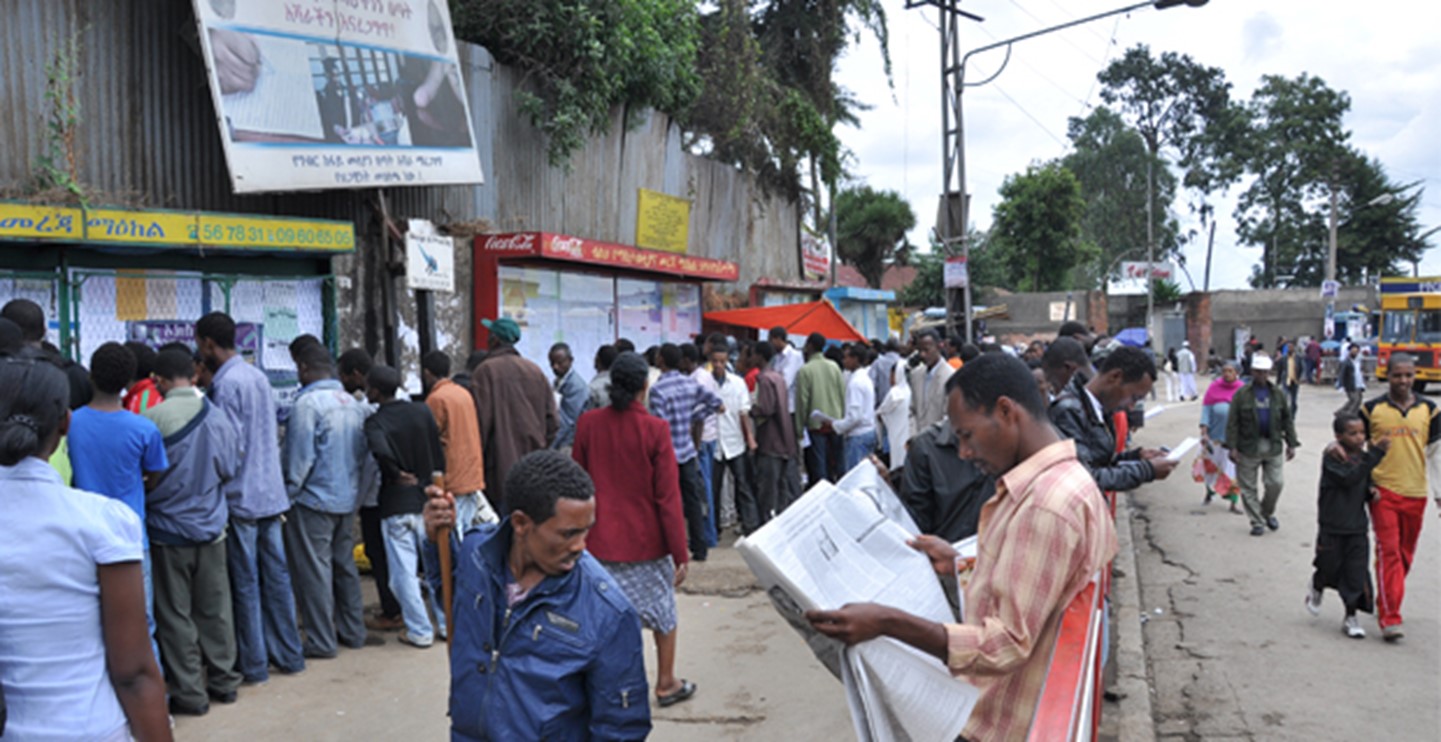
Job-search networks can be weakened by labour market interventions, such as job-search assistance, which can have adverse consequences for individuals who do not receive assistance
Social networks play a key role in job search, particularly in developing countries, where in many contexts a majority of workers report that they found out about their job through social networks (Beaman 2016, Sapin et al. 2020). Yet, exactly how job-seekers leverage social connections in the labour market is not completely understood. This gap in understanding makes it hard to predict how job search networks respond to policy. For example, do the direct beneficiaries of labour market policies support non-beneficiaries by sharing information and resources? Or do beneficiaries break social ties with non-beneficiaries?
A large body of research studies referrals – how one worker, usually with some relationship with an employer, might pass on a job opportunity to an unemployed job seeker (Munshi 2003, Beaman and Magruder 2012). We study a different type of job search network: when search costs are high, networks of unemployed job seekers might share information about vacancies and share the costs of job search.
We find that these types of job search partnerships are common and can be explained by a simple of model of strategic interest. We show that these networks can be disrupted by interventions that help only one or some of the partners, as they can generate inequality in access to information, undermining the basis for these reciprocal relationships.
Evaluating a job search intervention
In our paper (Caria, Franklin, and Witte 2023), we evaluate how a job-search assistance intervention in Addis Ababa, Ethiopia, affects the job-search partners of programme participants. In the intervention, a transport subsidy is offered to young job seekers. This subsidy is available for collection three times a week in the center of town where jobseekers can visit the job vacancy boards (Figure 1) and where many firms are located. Providing the subsidy reduces search costs of the individual, thereby positively impacting job search intensity and the acquisition of new labour market information (Abebe et al. 2021).
Figure 1: Example of job search boards

We track the social ties (“job-search partners”) of individuals. These are the people with whom programme participants regularly share job-search expenses and information. In Ethiopia, job-search partners are typically close friends, and social network support is reciprocal and frequently exchanged among unemployed people. 75% of our sample have received information about a vacancy through their networks. However, in the majority of cases, this did not involve a personal referral to the employer.
We hypothesise that when two individuals form a job search partnership, the efforts of one person to find a job also benefit the chances of the other person getting employed. It is these positive externalities that motivate individuals to form job search partnerships to begin with. However, maintaining these partnerships can be costly in terms of time and attention, and there is also a risk that favors may not be returned. Thus, individuals must weigh the benefits of a job search partnership against its costs.
Our primary empirical test compares the behaviour and outcomes of the partners of programme participants to that of the partners of non-participants.
First, we find that the job search intervention decreases social interaction among those job search partnerships where both individuals search for employment at baseline.
Five months after the start of the job search subsidy treatment, we document a significant, 32% decrease in the probability of sharing information about vacancies and a significant, 49% decrease in the likelihood of sharing transport expenses. Active job-search partners spend 7 fewer hours per month with their social ties when those are treated. In the full sample (which includes pairs where some individuals are inactive), we find insignificant declines in information sharing and in other forms of support such as sharing transport expenses.
Secondly, partners of programme participants reduce their job search efforts compared to the partners of non-participants.
Overall job search goes down by 20%, and job search strategies that require transport to the city center are chosen less frequently (a 30 to 40% drop). Search strategies that do not depend on commuting to the center of Addis Ababa are not affected by the transport subsidy: neither job search at work sites nor searching the internet for jobs decrease significantly.
The decrease in job search effort among individuals is not due to receiving more vacancy information from their treated friends. In fact, our research shows that there is less sharing of job information between job-search partners. This could be because it becomes more challenging to cooperate in job search when one jobseeker has access to more resources than the other. The inequality in job search costs makes job-search partnerships unstable because the individual with higher search costs tends to search less intensively than their partner. As a result, the individual with lower search costs may choose to end the partnership.
What we learn
From these results, it is evident that policy interventions can disrupt social networks. This has been shown in other contexts (Comola and Prina 2017, Banerjee et al. 2018, Stein 2018, Hess et al. 2018), but not for job search networks. These results have important implications for employment interventions, because typically such policies do not treat all people in a community – for example, they may select based on certain age, geographic, or neediness restrictions. Furthermore, the negative effects on social networks are stronger when the ties have similar initial expenditure levels. This highlights that the inequality generated by targeted interventions is a possible mechanism leading to the deterioration of social capital.
References
Abebe, G, S Caria, M Fafchamps, P Falco, S Franklin, and S Quinn (2021), “Anonymity or Distance? Job Search and Labour Market Exclusion in a Growing African City.” Review of Economic Studies.
Banerjee, A, A Chandrasekhar, E Duflo, and M O Jackson (2018), “Changes in Social Network Structure in Response to Exposure to Formal Credit Markets.” Working paper, Stanford University.
Beaman, L and J Magruder (2012), “Who Gets the Job Referral? Evidence from a Social Networks Experiment.” American Economic Review 102(7): 3574–3593.
Beaman, L (2016), “Social networks and the labor market.” In The Oxford Handbook of the Economics of Networks.
"Caria S, S Franklin and M Witte (2023), “Searching With Friends", Journal of Labor Economics (forthcoming)"
Cingano, F and A Rosolia (2012), “People I Know: Job Search and Social Networks.” Journal of Labor Economics 30(2): 291–332.
Comola, M and S Prina (2017), “Treatment Effects Accounting for Network Changes. Working paper”, Case Western Reserve University.
Granovetter, M S (1973), “The Strength of Weak Ties.” American Journal of Sociology 78(6): 1360–1380.
Munshi, K (2003), “Networks in the Modern Economy: Mexican Migrants in the U. S. Labor Market.” Quarterly Journal of Economics 118(2): 549–599.
Hess, S, D Jaimovich, and M Schundeln (2018), “Development projects and economic networks: Lessons from rural gambia.” The Review of Economic Studies.
Sapin, M, D Joye, C Wolf, in collaboration with J Andersen, Y Bian, A Carkoglu, Y Fu, E Kalaycioglu, P V Marsden and T W Smith (2020), “The ISSP 2017 social networks and social resources module.” International Journal of Sociology 50(1): 1–25.
Stein, M (2018), “Re-Forming Links: Effects of a Randomized Training on Business Network Changes among Micro-Enterprises in Uganda.” Working Paper.



